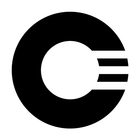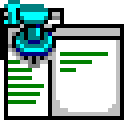
Paperwork
Paperwork is an open-source, self-hosted alternative to popular note-taking and archiving applications like Evernote and OneNote. It offers a powerful suite of features for creating, organizing, and managing notes and documents with a strong emphasis on privacy and control.
License
Open SourcePlatforms
About Paperwork
Paperwork positions itself as a robust, open-source solution for individuals and teams seeking an alternative to commercial note-taking and archiving platforms. Designed with flexibility and user control in mind, it allows users to manage their digital information without being tied to proprietary cloud services. Built using technologies like PHP, MySQL, and Angular, Paperwork provides a modern and responsive web interface accessible from various devices.
Key aspects of Paperwork include:
- Comprehensive Note Management: Beyond simple text notes, Paperwork supports various formatting options, including Markdown. Users can and organize notes in a hierarchical tree structure, allowing for infinite depth and detailed categorization.
- Powerful Document Archiving: Paperwork excels at archiving documents, integrating features like Optical Character Recognition (OCR) to make scanned documents searchable. This transforms physical documents into easily retrievable digital assets.
- Collaboration Features: While primarily focused on individual use, Paperwork includes features for document sharing and collaborative work, although the extent may vary depending on the deployment.
- Emphasis on Privacy and Security: As a self-hosted solution, users maintain full control over their data. Paperwork supports password protection for notes and, in some configurations, offers end-to-end encryption, providing a higher level of data security compared to many cloud-based services.
- Visual Organization: The application offers visual elements like bookmarks and a wiki-like interface to enhance organization and navigation within the note and document collection.
- Extensibility and Open Source: Being open source, Paperwork can be customized and extended by users with technical expertise. This fosters a community-driven development model and ensures transparency regarding data handling.
Paperwork stands out by blending traditional note-taking functionalities with advanced document management features, all within a controllable self-hosted environment. It's particularly well-suited for users who prioritize data ownership, require robust archiving capabilities, and are comfortable with setting up and maintaining their own server infrastructure.
Pros & Cons
Pros
- Complete data ownership and control through self-hosting.
- Integrated OCR for searchable scanned documents.
- Strong hierarchical organization and tagging system.
- Emphasis on privacy with password protection and potential encryption.
- Open-source and customizable.
Cons
- Requires technical expertise for setup and maintenance.
- Collaboration features may not be as robust as dedicated platforms.
- Relies on community development, which can affect consistency.
- No official mobile application listed in the provided information.
What Makes Paperwork Stand Out
Self-Hosted and Open Source
Maintain complete control over your data and customize the application to your specific needs.
Integrated OCR Capabilities
Easily digitize and make searchable text from scanned documents.
Focus on Privacy and Security
Benefit from password protection and potential end-to-end encryption, keeping your sensitive information secure.
Features & Capabilities
16 featuresExpert Review
Paperwork emerges as a compelling open-source alternative in the crowded landscape of note-taking and archiving applications. Its primary appeal lies in its self-hosted nature, granting users complete control and ownership of their data, a significant advantage over many commercial cloud-based services. This also aligns with a growing desire for increased privacy and reduced reliance on third-party platforms.
The application successfully integrates core note-taking functionalities with robust document management capabilities. Users can create and organize notes with various formatting options, including Markdown, catering to diverse writing styles and needs. The hierarchical tree structure for organization is particularly effective, allowing for deep levels of categorization that can accommodate extensive knowledge bases or archiving projects. This structure, combined with the ability to tag entries, facilitates efficient retrieval of information, even within a large collection.
A standout feature of Paperwork is its integrated Optical Character Recognition (OCR). This functionality transforms scanned documents into searchable text, effectively bridging the gap between physical paperwork and digital organization. For individuals or businesses dealing with substantial amounts of paper documents, this feature can significantly streamline workflows and reduce the need for manual data entry or reliance on external OCR tools.
Security and privacy are central to Paperwork's design philosophy. The option for password-protecting individual notes adds a layer of security for sensitive information. Furthermore, depending on the configuration, support for end-to-end encryption can ensure that data remains private and accessible only to authorized users, even in the event of a server breach.
While the core functionalities are strong, users should be aware that Paperwork is a self-hosted solution. This implies a degree of technical proficiency is required for installation, configuration, and ongoing maintenance. Setting up a web server, database, and configuring the application can be a barrier to entry for users without prior experience in these areas. However, for those comfortable with such tasks, it offers unparalleled flexibility and control. The open-source nature also means that features and development are community-driven, which can lead to both rapid innovation and occasional inconsistencies depending on the active contributors.
The user interface is generally clean and functional, built with modern web technologies like Angular and Bootstrap. Navigation is intuitive, and the visual organization features, such as visual bookmarks and the wiki-like interface, aid in navigating complex knowledge bases. The availability of a web clipper is a valuable addition for capturing information found online.
Collaboration features are present, allowing for document sharing. However, the real-time collaboration aspects might not be as mature or seamless as in some dedicated collaborative platforms. For individual use or small teams with minimal real-time editing needs, it is likely sufficient.
Export options, such as exporting to HTML, provide users with the ability to back up their data in a standard format or share it outside of the Paperwork environment. While options like LaTeX export may seem niche, they can be valuable for users in academic or technical fields.
In summary, Paperwork is a powerful and flexible open-source application ideal for users who prioritize data ownership, robust archiving capabilities, and are comfortable with managing their own server infrastructure. Its integrated OCR, strong organizational tools, and focus on privacy make it a compelling alternative for those looking to move away from proprietary cloud services. While it requires a certain level of technical expertise for setup and management, the benefits of control and customization can outweigh this for the right user.












